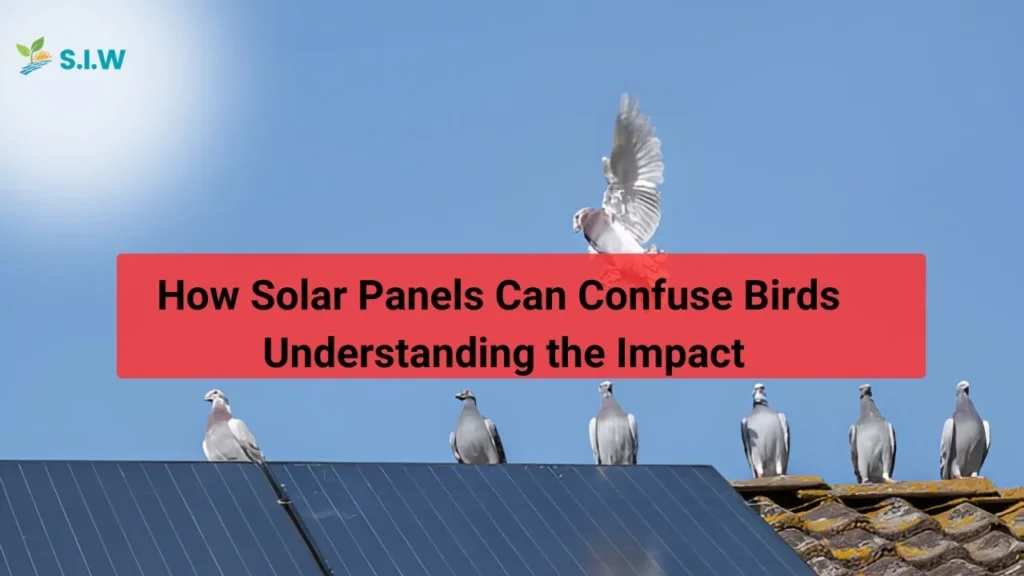Solar energy is a powerful and sustainable solution that helps reduce our reliance on fossil fuels. However, it comes with its own set of challenges, one of which is its potential impact on wildlife, particularly birds. This article delves into how solar panels can occasionally confuse birds, exploring their behavior and the measures taken to mitigate any negative effects.
The Intersection of Solar Energy and Wildlife
Solar energy has grown significantly in popularity as a clean energy source. Solar panels capture sunlight and convert it into electricity, significantly reducing greenhouse gas emissions. However, as solar farms expand, we must consider the impact of these structures on local wildlife, especially birds.
Birds are often seen soaring over solar fields, sometimes mistaking these reflective surfaces for water bodies. This confusion can lead to dangerous situations. Understanding how solar panels can confuse birds is crucial in creating wildlife-friendly energy solutions.
How Birds Perceive Solar Panels
Birds rely on visual cues to navigate their environment. Many species use sight to locate food, avoid predators, and find mates. When birds fly over a solar panel array, the reflective surfaces can appear similar to water, which attracts them. This phenomenon is particularly common in migratory birds that travel long distances and may mistake solar panels for natural water bodies.
The behavior of birds around solar panels can vary significantly based on species. For instance, species that typically feed near water may be more prone to this confusion. According to a study by the National Renewable Energy Laboratory (NREL), some birds may perceive the shimmering effect of solar panels as a cue to land, which can lead to accidents.
Personal Experience: Observing Bird Behavior
In my experience visiting a local solar farm, I noticed how birds interacted with the installation. While observing the site, I saw a group of small birds flying in low, seemingly attracted by the bright reflections from the panels. This made me realize how important it is for solar developers to consider wildlife in their planning processes.
Witnessing this behavior reinforced my understanding that solar energy, while beneficial, must be developed responsibly to minimize its impact on wildlife.
Mitigating the Confusion: Strategies for Solar Developers
Recognizing the potential confusion solar panels can cause for birds, developers and environmentalists have proposed several strategies to mitigate these risks.
- Panel Orientation and Design: Adjusting the angle and design of solar panels can minimize reflections. Some manufacturers are exploring anti-reflective coatings that reduce glare and make panels less attractive to birds.
- Landscaping: Creating natural barriers or planting vegetation around solar farms can help guide birds away from reflective surfaces. This method also supports biodiversity, providing habitats for other wildlife.
- Wildlife Monitoring: Implementing monitoring programs to track bird populations and behavior around solar installations can provide valuable data. Understanding which species are affected can help inform future projects and adjustments.
- Strategic Siting: Placing solar farms in areas with lower bird activity or away from migration routes can significantly reduce risks. Developers can work with ornithologists to identify suitable locations.
Understanding Solar Batteries and Installation Services
While discussing solar energy, it’s essential to consider complementary technologies, such as solar batteries and installation services. Solar batteries store excess energy generated by solar panels for later use, ensuring a consistent power supply even when sunlight is limited.
When installing solar batteries, it’s crucial to choose a service provider experienced in both solar panel installation and battery integration. The best solar services in the USA offer comprehensive solutions, ensuring that your solar energy system functions optimally.
Fixing Issues with Solar Lighting
In addition to solar panels and batteries, solar-powered lighting systems, such as PIR solar lights, are gaining popularity. These lights use motion sensors to conserve energy, illuminating only when necessary. However, like any technology, they may require maintenance.
If you experience issues with your PIR sensor solar light, there are simple troubleshooting steps you can take. Checking the battery, ensuring the sensor is clean, and confirming proper sunlight exposure can resolve many common problems.
The Future of Solar Energy and Wildlife
As we look to the future of solar energy, it’s clear that finding a balance between renewable energy development and wildlife conservation is essential. Innovations in technology and strategic planning can help reduce the impact on birds while promoting clean energy solutions.
By actively involving ecologists and wildlife experts in solar development, we can create environments where energy production and avian safety coexist. The key is to ensure that as we harness the power of the sun, we remain mindful of our feathered friends.
FAQs
- How do solar panels confuse birds?
Solar panels can reflect sunlight in a way that resembles water, attracting birds that mistake them for natural bodies of water. - What are the main risks to birds from solar farms?
Birds may collide with panels or experience habitat loss if solar farms disrupt their natural environments. - Are there measures to protect birds around solar farms?
Yes, developers can use anti-reflective coatings, landscape strategically, and monitor bird populations to minimize risks. - Can solar batteries impact wildlife?
While solar batteries are less likely to affect wildlife directly, proper installation and disposal are essential to avoid environmental harm. - What should I do if my solar light isn’t working?
Check the battery, ensure the sensor is clean, and confirm that the light receives adequate sunlight during the day.
Summary
In conclusion, solar panels can occasionally confuse birds, but with thoughtful planning and innovative solutions, we can continue to embrace renewable energy while protecting wildlife. By working together, we can create a sustainable future for both people and birds alike.








